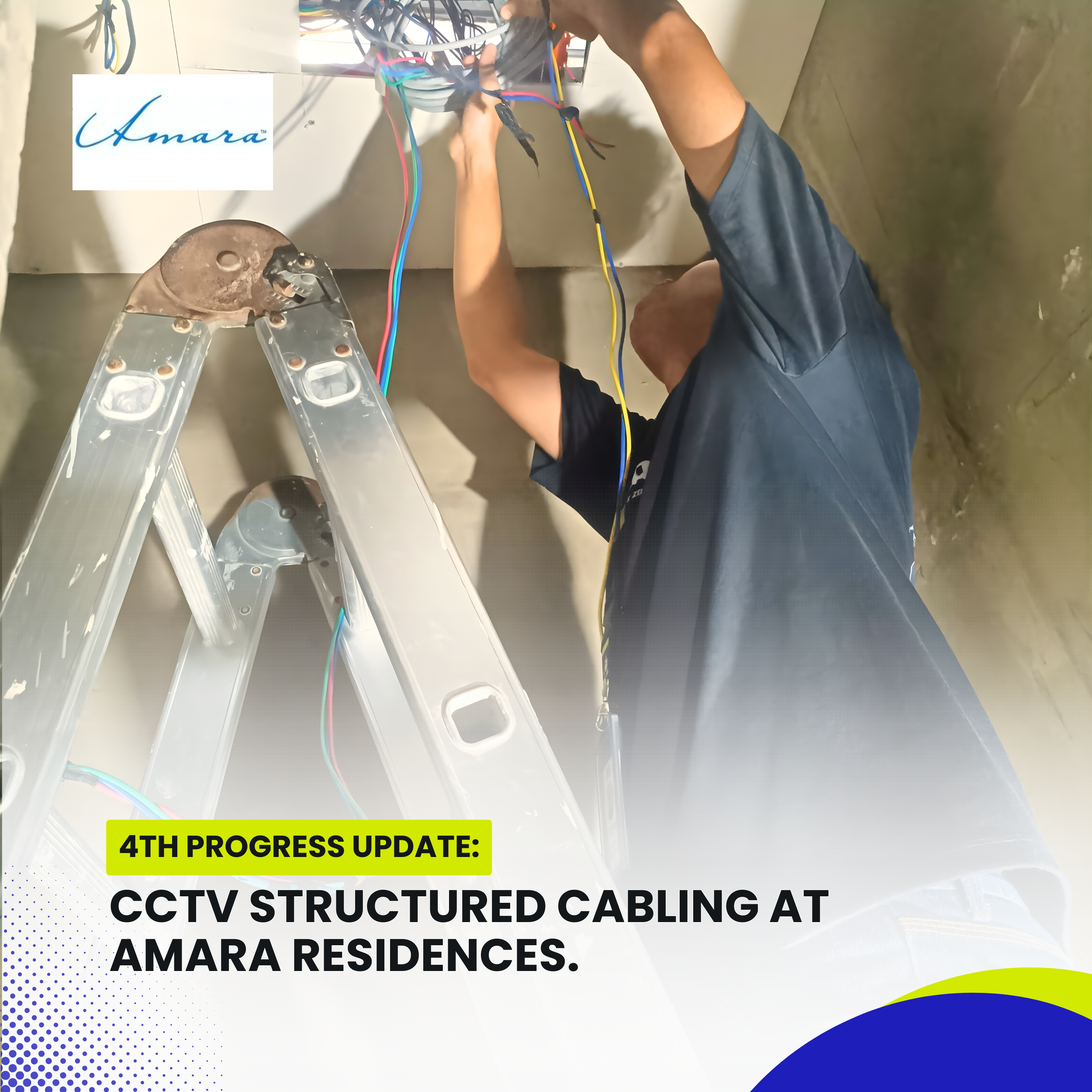AccessPoint Supply and Installation at Santo Niño Village-Final Progress Update. Introduction. Reliable wireless connectivity is essential in today’s homes, supporting daily communication, work, and entertainment needs. To ensure stable and extended network …
What CCTV Brands, and Types do We Recommend?

Introduction
Selecting the right CCTV system can be overwhelming for many clients, especially with the wide range of cameras, resolutions, brands, and connection types available in today’s market. That’s why we decided to go straight to the source: our own team of skilled IT technicians. In our latest interview video, we sat down with the people who work hands-on with CCTV systems every day to ask a simple but important question: “What CCTV camera type and brand would you recommend?”
The result? A detailed, experience-driven discussion filled with insights, real-world scenarios, and practical advice you won’t get from brochures or online reviews. Whether you’re managing a commercial space, running a small office, or looking to secure your home, this conversation offers valuable clarity on what works—and why.
Video Overview.
Grounded in Field Experience.
Our team isn’t speaking from a marketing script or a product manual. The opinions shared in the video come from fieldwork—installations, troubleshooting, site assessments, and ongoing client support. These recommendations are shaped by what actually works in day-to-day use, rather than just technical specs on paper.
Throughout the interview, each technician shares their perspective on what setups they find most effective, which brands hold up over time, and what they personally trust enough to recommend to clients. You’ll hear considerations like environment type, layout size, distance to be covered, and even power availability—all critical factors that often get overlooked in a general product search.
The Big Question: IP or Analog?
One of the core topics we explored is the ongoing debate between IP cameras and analog systems. IP (Internet Protocol) cameras are often praised for their flexibility and higher resolution, while analog systems are sometimes seen as more budget-friendly or straightforward to install.
But is one always better than the other? In the video, our team explains why the answer isn’t black and white. They share examples from both commercial and residential settings, revealing when and where one type outperforms the other.
Their take may surprise you—and it’s likely to challenge some common assumptions.
Wired or Wireless? It Depends…
Another major consideration addressed in the interview is connection type. Wired cameras are typically known for reliability and uninterrupted signal, but wireless cameras offer flexible installation and a cleaner look, especially in residential environments.
Rather than forcing a one-size-fits-all answer, our technicians walk you through scenarios where wired systems make more sense and cases where wireless setups are not just convenient but essential. From office environments with structured cabling to house installations where aesthetics and layout call for wireless gear, the discussion reveals how our team balances performance, cost, and context.
These first-hand accounts offer a real-world take that goes beyond basic spec sheets.
Resolution Choices: More Isn’t Always Better.
When it comes to camera resolution, many assume that higher is always better. But as our team explains, that’s not always the case in practical applications. During the interview, we asked about the ideal resolution for most clients, and the answers went deeper than just numbers.
Higher megapixel cameras can offer greater detail and wider coverage, but they also require more storage, bandwidth, and often higher cost. Our technicians describe how they choose between common options like 2MP and 4MP based on factors such as monitoring distance, environmental lighting, and clarity requirements.
There are situations where a higher resolution camera is vital—and others where it may be unnecessary. If you’re unsure what your space actually needs, this section of the video is especially helpful.
Not Just the Specs: Brand Matters Too.
Beyond types and specs, our technicians also shared their thoughts on trusted CCTV brands. While we don’t play favorites, we do emphasize reliability, long-term performance, and post-installation support.
The video covers which brands have performed consistently well in our deployments, which ones have more flexible software, and what to avoid when choosing a lesser-known or generic brand. These recommendations can save you from costly mistakes down the road.
From compatibility with remote monitoring apps to warranty handling, the brand discussion adds another layer of insight for viewers looking to make informed decisions.
Real Scenarios, Real Recommendations!
What sets this interview apart is that it doesn’t rely on abstract theory. Each technician shares real scenarios they’ve encountered on-site—from tight, cluttered office spaces with limited mounting options to residential areas where wireless connectivity was both a challenge and a solution.
You’ll also hear our team touch on key details clients rarely think about—like how certain materials can interfere with wireless signals, or why mounting height can affect both coverage and clarity. It’s these practical insights that turn a good CCTV system into a great one.
And best of all? Each perspective complements the others, giving you a full-picture understanding that’s both technical and accessible.
Informed Choices Through Real-World Experience.
The insights shared by our technicians go beyond textbook definitions or brand marketing claims. Their answers reflect the reality of working on diverse sites—each with its own challenges, limitations, and goals. This makes the interview especially relevant for anyone evaluating CCTV systems based on practical use rather than theoretical performance.
By highlighting the factors that influence real-world decision-making—such as environment type, camera placement, connection stability, and image clarity—the discussion encourages a more thoughtful approach to surveillance planning. The explanations given around camera type, resolution, and connectivity offer valuable guidance for both first-time and returning CCTV users.
Conclusion
CCTV technology continues to evolve, but one thing remains constant: choosing the right setup requires more than a quick online search. It takes context, experience, and a clear understanding of how different components perform in real-world settings.
That’s exactly what this interview delivers.
Whether you’re curious about resolution, debating between wired or wireless, or trying to figure out which camera type suits your space best—this video is packed with valuable insights. But to hear our team’s final verdict and specific brand recommendations, you’ll need to watch the full interview.
Case Studies
CCTV Site Inspection at Guadalupe, Nichols Park subdivision. Introduction. Ensuring the reliability and performance of surveillance systems is essential in maintaining safety and security within residential communities. On this day, InstallersPH IT …
CCTV Structured Cabling at Amara Residences- 4th Progress Update.
CCTV Structured Cabling at Amara Residences- 4th Progress Update. Introduction. The fourth progress milestone of the project focuses on the installation and configuration of the network infrastructure within the client’s facility. With …

